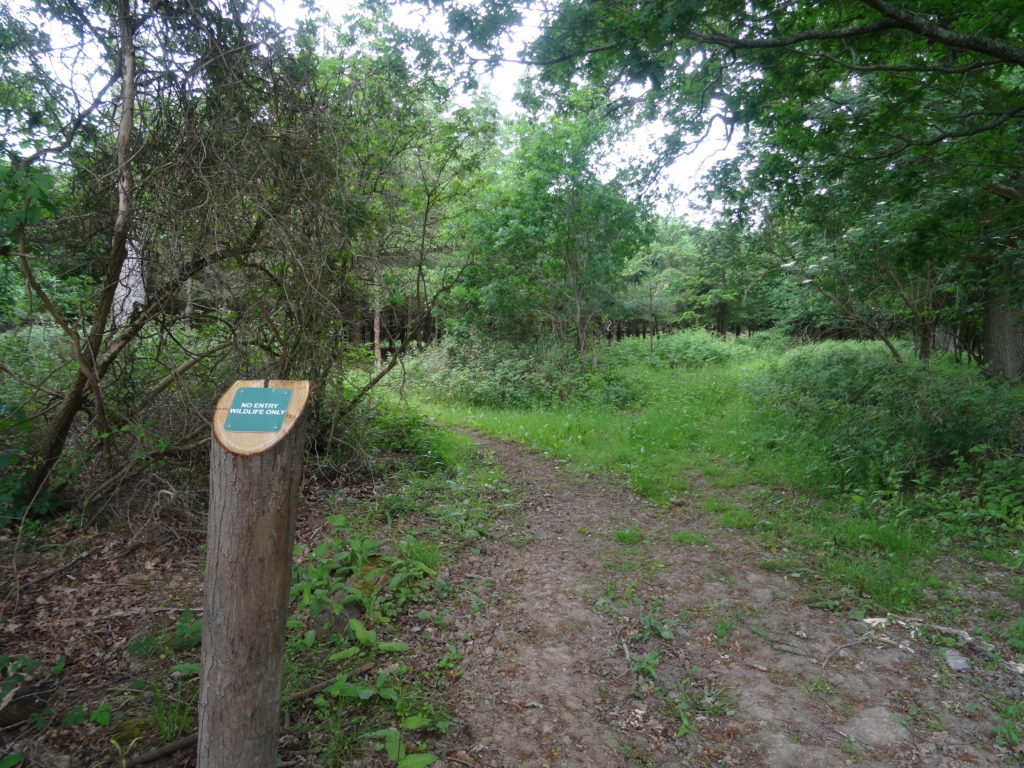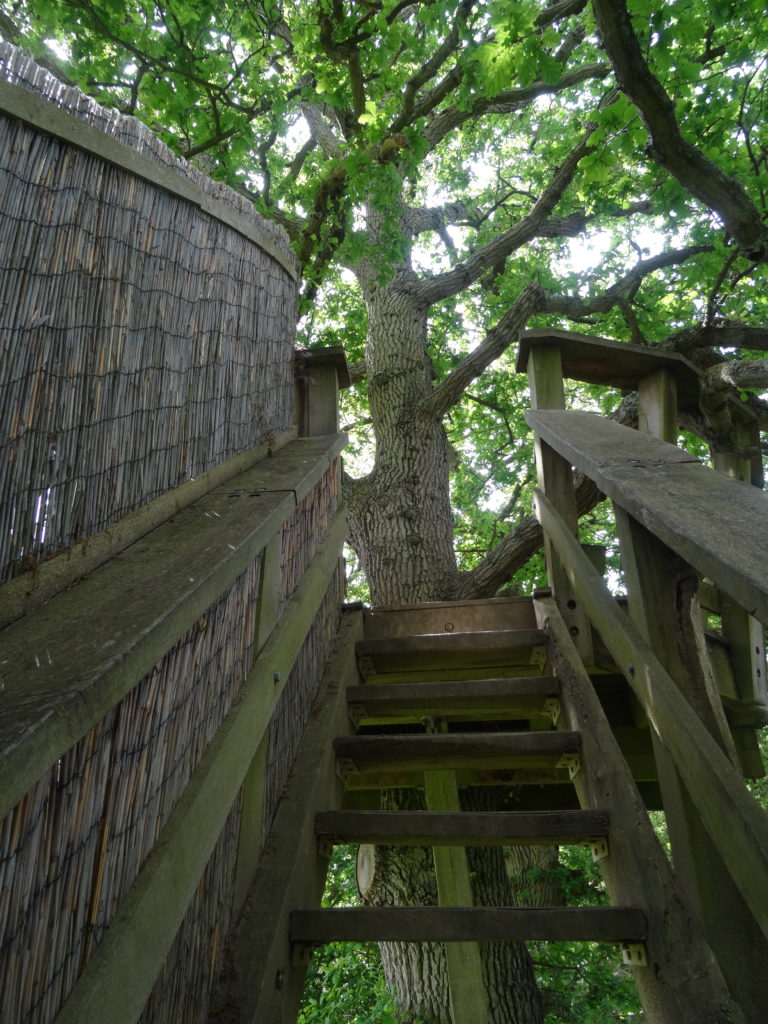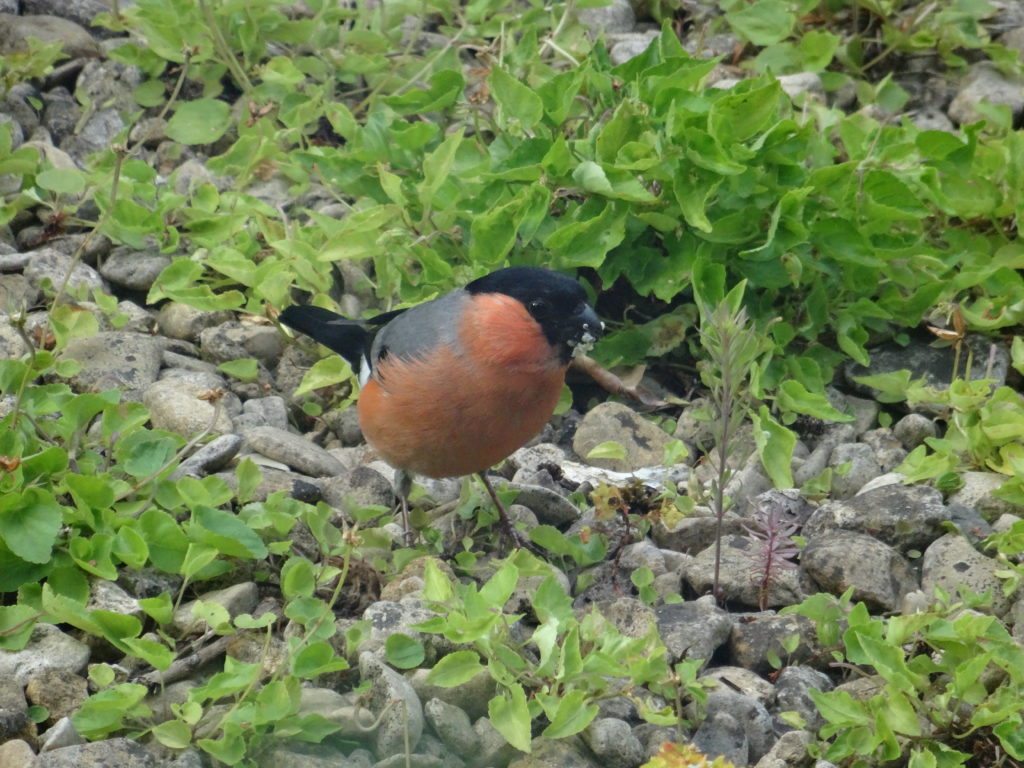Solstice sunshine, dog violets, and miraculous birds: Sue Brooks shares her most delighted-in moments of last month.
GALORE – this is my word for the month of June. I love the sound of it – so voluptuous, and essentially feminine. An adjective that comes after the noun and steals the show. Knepp galore was the start. A long anticipated visit after being totally thrilled by the book (Isabella Tree’s Wilding.) One of the wonderful aspects of the place is that it doesn’t announce itself – there are no brown signs, only a handmade board on a sharp corner in a lane, a cattle grid and a slow drive through woodland to a small car park with no parking meter.
I take my first walk; slow steps with eyes primed and the best my hearing aid can do, past a farmhouse and along a track, a tall hedge on one side and an open field on the other. This is no ordinary field though. It is more like English prairie, stretching into the distance with grasses of varying heights, small trees and mounds of bramble and dog rose that resemble gigantic anthills. And no ordinary hedge either: there are gaps obviously made by large animals, giving enticing views of clearings with taller grasses, willows and plants which like boggy ground. A few have wooden posts saying NO ENTRY. WILDLIFE ONLY. I rejoice when I read those words. This is a different kind of private land. We are the trespassers here. The non-human occupants have the right to roam freely.

In the space of an hour on that evening in early June, with the busy A24 less than a mile away and Gatwick Airport not much further, I hear a nightingale, a cuckoo and the soft purring of a turtle dove. It feels like a miracle. On the way back to the car, I stop to watch a family group of rabbits. Not the frightened, sick-looking creatures I am accustomed to, but a confident community, the male sitting very tall on his haunches, ears twitching, keeping a look-out while the youngsters feed. He does not see me, 50 yards away, as a threat. More delights follow. Too many to tell, except for the best of all.
It’s the last afternoon and I’m sitting in one of the tree houses generously provided around the estate. The nightingale has been singing again, and a quick movement catches my eye. The nightingale?? No; it’s a male bullfinch. He has flown in to sit beside his mate, a beautiful peach- breasted female, camouflaged by the leaves. He moves closer to her, hopping sideways along the branch, and then, I swear, he leans over and gives her what I can only describe as a kiss. I know this is ridiculous romantic nonsense, anthropomorphism of the worst kind, but my heart is in my mouth, I gasp, or say something out loud. It disturbs them and off they go, the male in front, the female following. Ah, the intimacy of that moment. A bird’s eye view from a branch on a neighbouring tree. I will never forget it.

Back home from Knepp sitting in the upstairs window, as I do most mornings, things have changed. They always do, of course. I never tire of this east-facing view over fields, hedges, and the hills beyond. The sun is approaching its most northerly point on the ridge where it rises in the tiny gap in the trees which will mark the Summer Solstice. This is different though. The change is in me. Now I see sheep-bitten fields, the grass a uniform chemical green, the hedges well clipped with a token hawthorn or oak at intervals, the copse crouched in a hollow which would be of no use to a farmer. The land-owner who grows maize as cover for pheasants for his shooting parties at weekends has planted 5 trees in one of his fields. Each one is in a wooden cage. A rage sweeps through me. George Monbiot is right. Sheep are a blight on the landscape.
I read the first two hundred pages of Richard Power’s The Overstory. It rains for the best part of every day for nine days. I walk in the woods all the same and think about trees. Notice the million complex beautiful behaviours that have slipped right past you. And I do notice. I walk as I did at Knepp – slowly and with intent. Peter Wohlleben’s book The Hidden Life of Trees was a mind opener, but The Overstory has been explosive. One shock after another: the power of a story where trees are the main characters, each one an individual with complex beautiful behaviours. In the woods I think I know well, the reality is that I know next to nothing. I try to notice small things, the smaller the better, and remember to take my camera. I set out to visit individual trees, as I would a friend. How would I feel if the Forestry Commission brought in their contractors with chainsaws? Would I step up to the mark?

For two days around the Solstice, the rain stops. A bullfinch comes to the garden. This is not unusual. A pair – and often a whole family – visit for seed in the summer months; never from the feeder, always the docks, knapweed and meadowsweet which grow wild in the front garden. The last two years they have come earlier and stayed longer at the back of the house where dog violets have seeded in the gravel. I love all these plants which choose to come here – even the docks – but especially the violets. I had no idea how prolifically they flower and seed, nor that they are beloved by bullfinches. The tide of violet plants is almost up to the back door this year and the male and female were both feasting there on June 2nd. The male who appears around midday on the 20th, however, is alone. He perches on the roof of the woodshed. An exposed spot at an unusual hour. There is no sign of the female. I watch the beak open and the throat swell and quiver. I long to be able to hear his high pitched song. Bullfinches mate for life and surely he is singing for her. My heart aches for the poignancy of it, his and mine. Later, on reflection, I wonder about the meaning of that exposed perch. Even if it is not, as I so fancifully imagined, a lament for lost love, could it have been an announcement of a chosen site for a new mate, one with an ample supply of violets? I send up a wish that he survives the winter and returns.
In the warm days at the end of the month, there seems to be an acceleration of LIFE in this oasis of tall trees, rampant plants and overgrown hedges that are the bane of my neighbours. I notice more fledglings than ever before, often in small groups from early morning until late in the evening. I remind myself that there are complex reasons for this, but it does feel as though what I am encouraging here, inadvertently and on a very small scale, is making a contribution. Yesterday, arriving home in the late afternoon, a host of sparrows exploded from the gravel. So many, I could hear the rushing of their wings. The resident population is probably about twenty five, but at that moment it was more like forty or fifty. I was thrilled. Sparrows Galore.